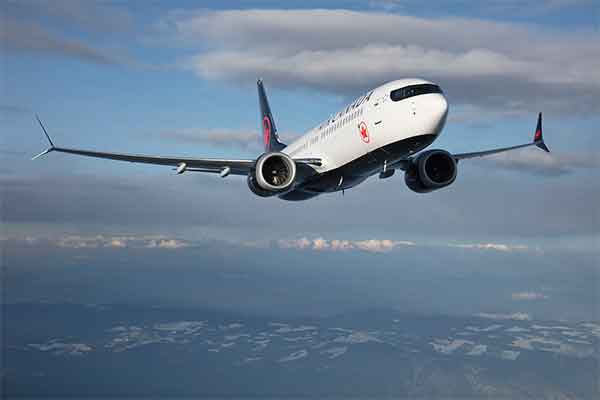Monday, February 19, 2024

Air Canada in the fourth quarter of 2023 turned an operating profit of C$79 million ($58.6 million).
It is bouncing back from the C$28 million operating loss it reported for that quarter in 2022 following the end of Canada’s COVID-19 travel restrictions.
The Montreal-based airline generated C$5.2 billion in operating revenue during the fourth quarter, up 11% year on year and driven by recovery of both domestic and international routes.
For the full-year 2023, Air Canada swung to a C$2.28 billion operating profit, recovering from a loss of C$187 million in 2022. Its 2023 revenue came in at C$21.8 billion, a 32% year on year bump.
Air Canada’s domestic Canadian revenue in the fourth quarter was stagnant compared with the same period of 2022.
Demand is still recovering on the airline’s transpacific routes, and international travel is poised to outpace domestic demand in 2024.
Air Canada chief executive Michael Rousseau says, “Our airline remains adaptable to changing business conditions and is poised to take advantage of opportunities”.
Shifting business conditions include lacklustre demand for air freight in North American markets.
Air Canada generated C$244 million in cargo revenue in the fourth quarter, down 15% year on year.
During the COVID-19 pandemic, the carrier had boosted its air freight operations to hedge against declines in passenger revenue, ending 2023 with seven Boeing 767-300 freighters in service.
But the air cargo market has recently softened. Demand, measured in cargo tonne-kilometres, declined 1.9% year on year in 2023, trade group IATA reported, adding that the cargo market showed “a strong fourth-quarter performance despite economic uncertainties.”
North American carriers, however, reported “the worst year-on-year performance of all regions,” with demand declining 5.7% year on year in 2023.
FLEET GROWTH GOALS
Air Canada is seeking to grow its fleet to keep up with recovering air travel demand and to help reduce costs by phasing out aging, less fuel-efficient aircraft.
The carrier plans to acquire 27 Airbus A220s between 2024 and 2027, with two expected to arrive this year. It also intends to place five leased Boeing 737 Max 8s into service in 2025.
Air Canada also has orders for 30 A321XLRs, which it expects to receive between 2025 and 2029 and to deploy on international routes.
The A321XLR schedule, however, remains particularly dependent on the manufacturer keeping its deadlines.
Airbus on 15 February moved the anticipated start of deliveries for A321XLRs to the third quarter of 2024 from its previous goal of the second quarter.
On the widebody side, Air Canada expects to receive one more 787-9 in 2024, and to receive 18 787-10s between 2025 and 2027.
It holds options to order up to 12 additional 787-10s.
Air Canada’s capacity in the fourth quarter grew 9% year on year, while its load factor came in at 83.5%, up less than one percentage point year on year.
Despite noting pressure to bring more aircraft into operation, Air Canada forecasts its capacity in 2024 will grow 6-8% year on year.
INCREASING COMPETITION
Aircraft capacity is just one potential complication for Air Canada as it seeks to maintain market share against striving competitors.
Canada’s second-largest airline, WestJet, is gradually integrating the networks and operations of Sunwing Airlines, which it acquired last year. Sunwing’s assets are poised to give the combined company an edge on routes to warm-weather destinations.
Meanwhile, two other competitors – Toronto-based Porter Airlines and Montreal-based Air Transat – plan in 2024 to gradually implement a joint venture aimed helping them better compete against larger airlines like Air Canada.
Through that joint venture, announced in November, Porter’s network in Canada and the USA will connect passengers to Air Transat’s international flights to Africa, the Caribbean and Europe.
Additionally, both WestJet and Air Transat are poised to add or restore European routes to their networks as Canadians seek more transatlantic travel, the market which generated the most revenue for Air Canada in 2023.
Canada’s growing low-cost airline sector – players include Flair Airlines, Canada Jetlines and Lynx Air – also pose competitive threats on routes within Canada and to the USA.
Several Canadian news outlets recently reported discussions of a potential merger between Edmonton-based Flair and Calgary-based Lynx, both of which operate Boeing 737s.
If approved by Canadian regulators, such a merger would further shake up a market traditionally dominated by a duopoly between WestJet and Air Canada.
Tags: Air Canada, airlines, international flights
Saturday, April 27, 2024
Saturday, April 27, 2024
Sunday, April 28, 2024